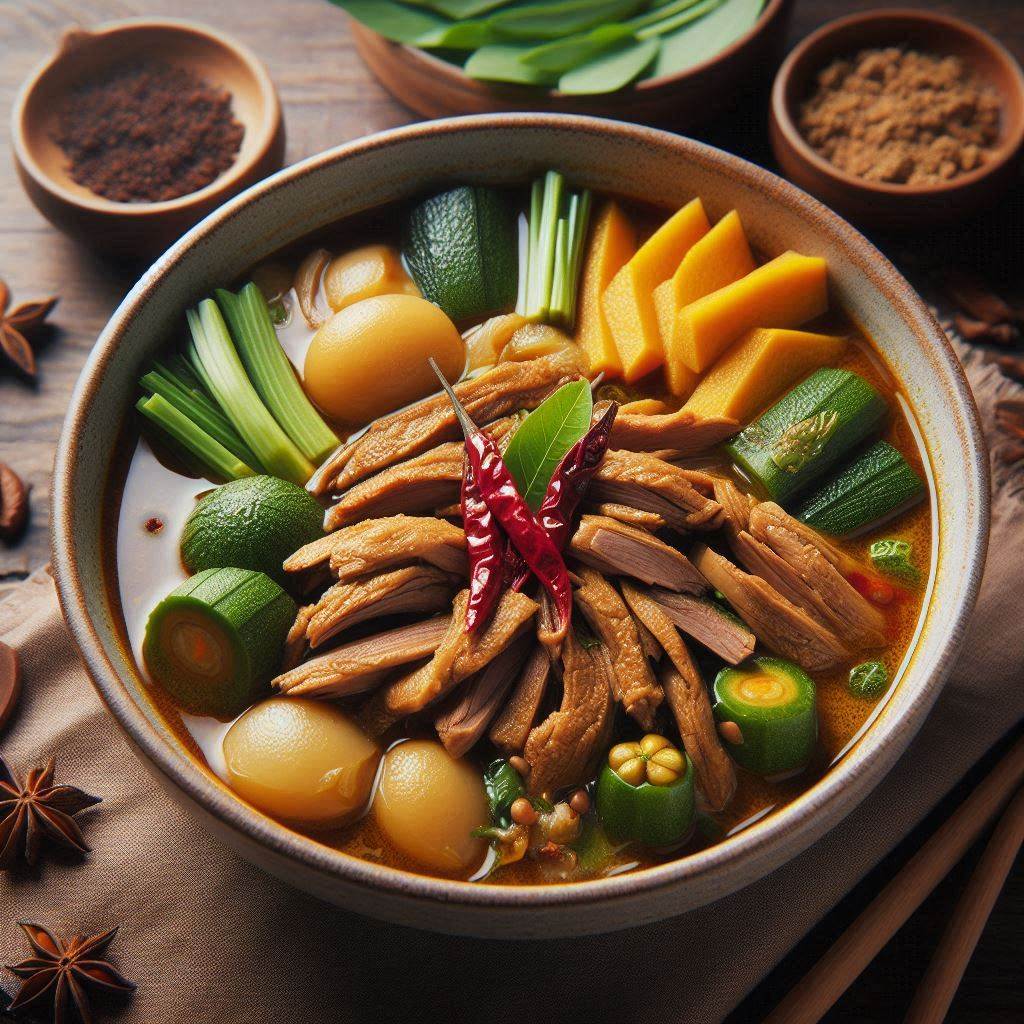Assam, a gem of India’s Northeast, is celebrated not only for its breathtaking landscapes and tea gardens but also for its rich culinary heritage. Assamese food is a delightful combination of flavors, textures, and traditions that offer a truly unique gastronomic experience. In this guide, we explore the history of Assamese cuisine, popular dishes, and recipes that embody Assam’s culinary soul.
A Brief History of Assamese Cuisine
Assamese cuisine has roots that stretch back centuries, shaped by the diverse cultures and communities of Assam and the surrounding Northeastern states. The flavors and techniques reflect influences from tribes like the Ahoms, the Bodos, and the Khasi, as well as neighboring countries like Myanmar and Bhutan. What distinguishes Assamese food is its focus on fresh, local ingredients and minimal use of spices, which allow the flavors of the ingredients to shine.
Unique Ingredients and Techniques
Assamese food is known for its extensive use of local herbs and vegetables, such as bamboo shoots, moringa leaves, fermented fish (ngari), and mustard oil, which add depth and flavor. Key techniques include fermentation, steaming, smoking, and curing, which preserve food while enhancing its taste.
Signature Assamese Dishes You Must Try
1. Khar – The Quintessential Assamese Dish
Khar is a traditional Assamese dish and an absolute must-try. Named after its main ingredient, khar (a filtered alkaline solution made with sun-dried banana peels), this dish has a subtle, earthy flavor. Usually prepared with raw papaya, pulses, or meat, Khar is considered cleansing for the stomach.
Recipe for Khar
Ingredients:
- 1 raw papaya, diced
- 1 tablespoon of khar or baking soda (as a substitute)
- 1 teaspoon mustard oil
- Salt to taste
Instructions:
- Heat mustard oil in a pan and add diced papaya.
- Add khar solution and salt.
- Cook on medium heat until the papaya becomes soft and the flavors meld together.
- Serve warm with rice.
2. Aloo Pitika – Comfort Food of Assam
Aloo Pitika, a mashed potato dish, is simplicity at its finest. Often served with rice and dal, it’s made with boiled potatoes, green chilies, onions, and mustard oil, making it a staple in Assamese households.
Recipe for Aloo Pitika
Ingredients:
- 2 boiled potatoes
- 1 small onion, chopped
- 2 green chilies, chopped
- Salt to taste
- 1 teaspoon mustard oil
- Fresh coriander leaves for garnish
Instructions:
- Mash the boiled potatoes and mix in the chopped onions, chilies, and salt.
- Drizzle mustard oil on top, mixing well.
- Garnish with fresh coriander and serve.
3. Masor Tenga – Tangy Fish Curry
Masor Tenga is a refreshing and tangy fish curry, made with tomatoes, lemon, and a few select spices. This dish is particularly popular during the summer months, providing a light yet flavorful complement to rice.
Recipe for Masor Tenga
Ingredients:
- 500g fish (like Rohu)
- 1 tablespoon mustard oil
- 1 medium tomato, chopped
- 1 green chili, slit
- 1 teaspoon turmeric powder
- Juice of 1 lemon
- Salt to taste
Instructions:
- Marinate the fish with salt and turmeric, then fry it until golden brown.
- In another pan, heat oil, add tomatoes, and cook until soft.
- Add turmeric, green chili, and water. Bring to a boil.
- Add the fried fish and cook until tender. Add lemon juice and adjust salt.
- Serve hot with steamed rice.
4. Pitha – Assamese Sweets
No Assamese celebration is complete without Pitha, a traditional rice flour sweet that is often enjoyed during festivals like Bihu. There are several types of Pithas, including til (sesame) pitha, narikol (coconut) pitha, and ghila pitha.
Recipe for Til Pitha
Ingredients:
- 1 cup rice flour
- 1/2 cup black sesame seeds
- 1/4 cup jaggery, grated
Instructions:
- Toast sesame seeds and mix with jaggery.
- Take a small portion of rice flour dough, flatten it, and place the sesame-jaggery mixture in the center.
- Roll and shape into cylindrical logs, then pan-fry until golden.
- Enjoy hot with tea or as a dessert.
Why You Should Try Assamese Food
Assamese cuisine offers more than just a meal; it provides a glimpse into the history, lifestyle, and values of the Assamese people. Its minimalism, use of fresh ingredients, and bold flavors make it one of the healthiest and most flavorful regional cuisines in India.
Health Benefits of Assamese Cuisine
- Rich in Nutrients: Fresh vegetables, herbs, and lean meats make Assamese food nutrient-dense.
- Low in Spices: The cuisine’s mild spicing makes it suitable for people with dietary restrictions.
- High in Omega-3s: Fish is a significant part of Assamese food, providing essential omega-3 fatty acids.
Assam’s Food and Festivals
Festivals like Bihu, celebrated thrice a year, are synonymous with feasting in Assam. During Bihu, locals prepare an array of sweets like pitha, larus (laddoos), and special curries, which highlight Assam’s culinary diversity.
Tips for Cooking Assamese Food at Home
- Use Mustard Oil: It gives Assamese dishes an authentic, robust flavor.
- Experiment with Herbs: Include local herbs like manimuni (gotu kola) and dhekia (fiddlehead fern) for unique tastes.
- Explore Fermentation: Try fermenting ingredients like bamboo shoots or fish for an added depth of flavor.
Conclusion
Exploring Assamese food opens the door to a vibrant world of taste, culture, and tradition. From the unique, earthy flavors of Khar to the tangy Masor Tenga, Assamese cuisine provides a sensory journey unlike any other. So why not bring a taste of Assam into your kitchen today? Try out some of these recipes, and experience the flavors that have captivated food lovers across the world.
Click :- www.nutritionalgrowth.com
Linkedin :- Click



